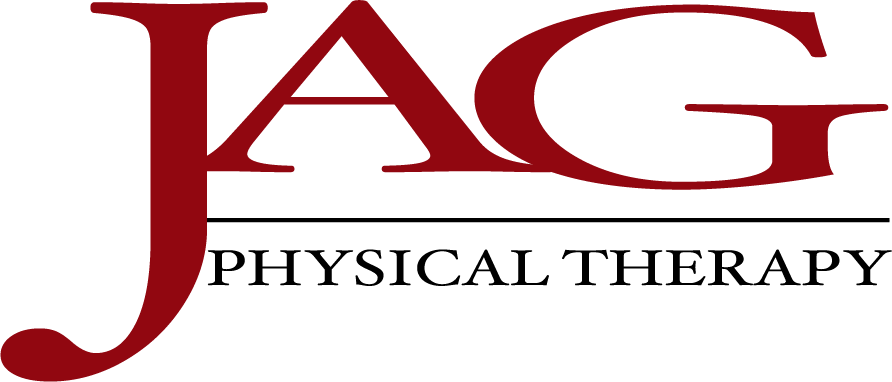The quadriceps muscles, commonly called the quads, are responsible for extending the knee, flexing the hip, stabilizing the kneecap, and internally rotating the thighs. To do all that, the quads are built to exert immense power. Strong quads are essential for maintaining proper posture, gait, and balance. This is all the more so when it comes to athletic performance.
Understanding your quad strength is the first critical step toward improving your overall leg function. A quad strength assessment gives you a starting point and target when you work out your legs in general.
At JAG PT, whether you’re looking for rehabilitation for hip or knee conditions, athletic training, or other specialty physical therapy services, our therapy team is here to help with empathy and skill. Book an appointment at your closest location in PA, NY, or NJ today, or read further to find out more about quadriceps assessments and training.
Why Is Quad Strength Important for Overall Leg Power and Performance?
The quadriceps are made up of four individual muscles — hence the name, meaning “four-headed”. A 2016 study claims that a fifth muscle (tensor of the vastus intermedius) is involved in the system, but there are four that all doctors agree are quadriceps muscles:
- Rectus femoris: Extends from the hip bone and pelvis down to the kneecap, making it a powerful knee extensor. It also helps flex the hip.
- Vastus intermedius: Lies deeper in the thigh, beneath the rectus femoris. It helps extend the knee.
- Vastus lateralis: The largest and strongest quad muscle. It extends the knee and keeps the thigh and kneecap in position while walking, running, and jumping.
- Vastus medialis: The smallest muscle in the group, connecting the femur to the kneecap. It stabilizes the kneecap during knee extensions.
All four quad muscles act on the knee and hip to perform upper and lower leg movements. In this way, they enable you to run, jump, walk, and squat. They also stabilize your leg posture and movements and absorb the impact of everyday mobility activities.
How Can You Measure Your Quad Strength Accurately?
It’s important to understand how your quads contract during normal movement of different kinds. The quads can perform three different kinds of muscle contractions:
- Isotonic: This occurs when the quad muscles change length while contracting.
- Isometric: The quads remain the same length when contracting.
- Isokinetic: The quads contract to provide constant mechanical movement at the hip and/or knee joint.
Quad strength tests use specialized machines or manual tools, such as hand-held dynamometers and calibrated leg extension machines, that assess the strength of a particular type of these contractions. Testing will tell you a measurement in terms of force or weight.
Besides raw power, quad strength tests also assess the following metrics:
- Quad functions, including nervous response, failure points, pain tolerance, and range of impacted motion
- Imbalances in the various quad muscle heads
- The hamstring-to-quadriceps strength ratio
What Are Effective Exercises for Strengthening the Quadriceps?
Because the quadriceps is a complex muscle system, you should use varied techniques in order to work it out effectively. Here are three of the best strengthening exercises for the quads:
Squats
- Stand upright with your feet spread just outside your shoulder width and toes slightly pointing outward.
- Plant your heels onto a stable, elevated surface.
- Lock your hips and knees.
- Slightly push your hips back and arch your chest outward.
- Slowly sink into a sitting position until your quads are parallel to the floor.
- Push back up to the starting position with your hips and chest rising simultaneously.
- Hold weights to make the exercise more challenging.
Forward Lunges
- Take a knee on the floor with your shoulder and hip perfectly aligned with the trailing knee.
- Ensure the sheen of the leading leg is vertical.
- While pivoting and balancing on the trailing foot, push against the floor with the leading leg until it aligns with your torso.
- Switch legs every couple of reps.
- Hold equal weights in both hands to make the exercise more challenging.
Leg Presses
- Lie on the leg press machine with your back straight.
- Position your feet as low as possible on the platform.
- Slowly push the platform away with the feet perfectly flat until your knees are nearly straight.
- Hold this position for a few seconds.
- Slowly let the weight descend.
- Push back up once your knees come close to your chest.
- Add weights as needed.
Are There Specific Strategies to Improve Quad Strength and Leg Power?
There’s more to strengthening quads than simply hitting the gym. Here are tips and strategies for stronger quads while minimizing injury risk:
- Warm up before doing any exercises.
- Cool down after each workout session.
- Focus on form, not weight.
- Stick to a consistent routine.
- Add weights progressively.
- Do not ignore other leg muscles (glutes, hamstrings, and calves).
- Give your quads time off to recover after intense strength training.
- Gauge your progress with regular quad strength tests.
Enhance Your Leg Power and Quad Strength with JAG PT
At JAG PT, our team is here to help you meet your fitness and athletic goals, as well as to help you rehabilitate as quickly as possible if you have a musculoskeletal injury. Schedule an appointment at your nearest location to see one of our sports medicine specialists, or contact us today with any questions.
Learn More About Physical Therapy from JAG PT:
- The Role of Physical Therapy in Recovering from ACL Injuries
- ACL Injury Prevention Exercises
- How to Stay in Shape with a Knee Injury
- Post-Operative Knee Rehab: How Physical Therapy Can Optimize Recovery
